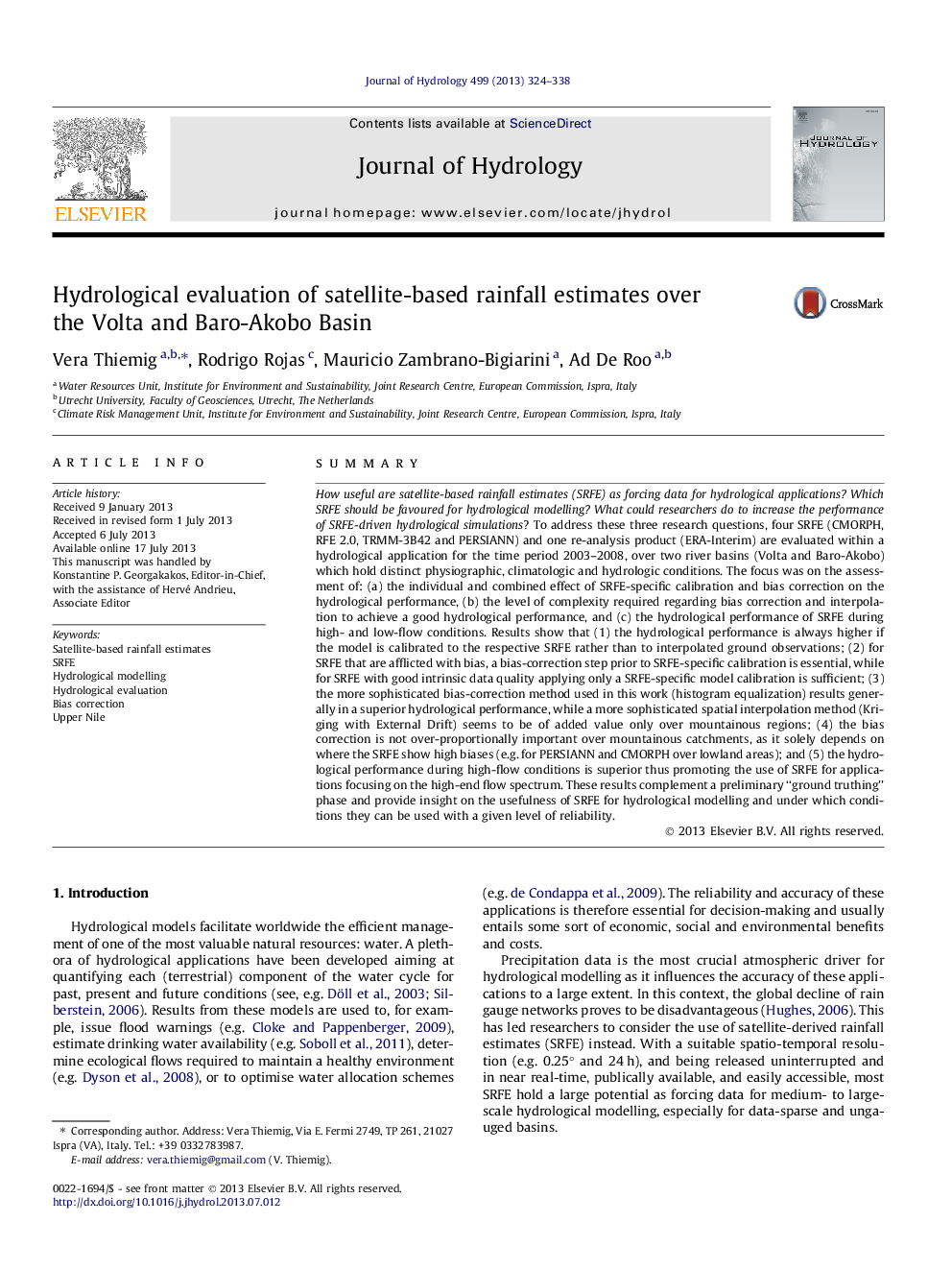| کد مقاله | کد نشریه | سال انتشار | مقاله انگلیسی | نسخه تمام متن |
|---|---|---|---|---|
| 6413659 | 1629949 | 2013 | 15 صفحه PDF | دانلود رایگان |
- Comprehensive hydrological evaluation of 5 SRFE over 2 distinctive catchments.
- State-of-the-art calibration, bias-correction and performance indicator applied.
- SRFE-specific calibration and bias-correction improve the hydrological performance.
- For SRFE with good intrinsic quality, calibration seems to be sufficient.
- For SRFE with quality flaws, bias-correction prior to calibration is essential.
SummaryHow useful are satellite-based rainfall estimates (SRFE) as forcing data for hydrological applications? Which SRFE should be favoured for hydrological modelling? What could researchers do to increase the performance of SRFE-driven hydrological simulations? To address these three research questions, four SRFE (CMORPH, RFE 2.0, TRMM-3B42 and PERSIANN) and one re-analysis product (ERA-Interim) are evaluated within a hydrological application for the time period 2003-2008, over two river basins (Volta and Baro-Akobo) which hold distinct physiographic, climatologic and hydrologic conditions. The focus was on the assessment of: (a) the individual and combined effect of SRFE-specific calibration and bias correction on the hydrological performance, (b) the level of complexity required regarding bias correction and interpolation to achieve a good hydrological performance, and (c) the hydrological performance of SRFE during high- and low-flow conditions. Results show that (1) the hydrological performance is always higher if the model is calibrated to the respective SRFE rather than to interpolated ground observations; (2) for SRFE that are afflicted with bias, a bias-correction step prior to SRFE-specific calibration is essential, while for SRFE with good intrinsic data quality applying only a SRFE-specific model calibration is sufficient; (3) the more sophisticated bias-correction method used in this work (histogram equalization) results generally in a superior hydrological performance, while a more sophisticated spatial interpolation method (Kriging with External Drift) seems to be of added value only over mountainous regions; (4) the bias correction is not over-proportionally important over mountainous catchments, as it solely depends on where the SRFE show high biases (e.g. for PERSIANN and CMORPH over lowland areas); and (5) the hydrological performance during high-flow conditions is superior thus promoting the use of SRFE for applications focusing on the high-end flow spectrum. These results complement a preliminary “ground truthing” phase and provide insight on the usefulness of SRFE for hydrological modelling and under which conditions they can be used with a given level of reliability.
Journal: Journal of Hydrology - Volume 499, 30 August 2013, Pages 324-338
